The Casino - Hospital No. 1
Source: Kaletzki, Charles Hirsch. Official history USA Base Hospital No. 31 of Youngstown, Ohio: And Unit G of Syracuse University. Syracuse, NY, Craftsman Press, 1919.
Across the park was situated the Casino, the most modern and beautiful in Contrexeville, housing a capacious theatre, game rooms and salons which, it was expected, would be used by the surgical department, the large foyer immediately suggesting itself as an ideal operating pavilion. [Kaletzki, p. 34]
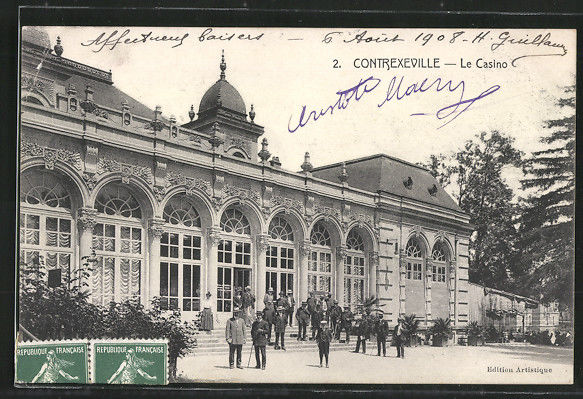
Postcard from 1908, showing the Casino in Contrexeville (image captured from Ebay.)
Building No. 1 (the Casino), including the operating room and adjacent facilities, was put in commission, providing Base Hospital No. 31 with one of the most complete operating rooms in the A. E. F. The Casino building, erected in 1900, had been the principal gathering place of summer guests at the Contrexeville health resort and was the most elaborately finished of all the buildings occupied by Base Hospital No. 31. The capacious foyer leading to the Casino Theatre was transformed into a brilliantly lighted, airy and always pleasant operating room. Two large rooms that had been used as lounges and play rooms became surgical wards and other adjacent rooms were put in commission as preparation room, sterilizing room, officers' and stock rooms.
In the preparation room were installed several tables for removing patients' clothing and generally preparing for operation. On the other side of a partition was a small service room for the convenience of the preparation room and the small surgery room on the other side. Two regulation operating tables in the small operating room were for infected cases, the larger operating room being reserved for clean cases. Five regulation operating tables and one Hawley orthopedic table constituted the principal equipment of the large operating room. Side stands, electric lamp standards and service tables were conveniently placed. All floors were cement or tile. Ample electric light facilities were provided, and, to further guarantee light under emergency circumstances, a complete acetylene gas system was installed, providing lamps of high candle power over each table. An alcove was equipped with suitable facilities for surgeons' preparation room. The office of the Chief of Surgical Service and sleeping quarters for operating room personnel were nearby.
Leading from the operating room was a corridor which connected two wards, the total normal capacity of which was fifty beds. One was to be used as an admitting ward, to which the most seriously wounded would be brought, and the other to serve as a "shock" ward for the care of patients whose condition following operation would not permit of their early transportation to proper wards. A small kitchen, sufficiently large for the needs, was adjacent to one of these wards.
The equipment of the sterilizing room was thoroughly modern. A large steam boiler just outside the window provided sufficient pressure for sterilizing purposes. Inside the room were installed one 5-large drum autoclave, a double water sterilizer and large sized utensil and instrument sterilizer. A long table through the center of the room was for making dressings and general utility purposes. Surgery equipment included an ample supply of instruments, comprising regular U. S. Army and Red Cross surgical instruments for ordinary and special work, including an Albee bone set, Mueller intra-tracheal anesthetizer, Ohio nitrous oxide oxygen machine and Gwathney bedside unit. [Kaletzki, p. 40-41]
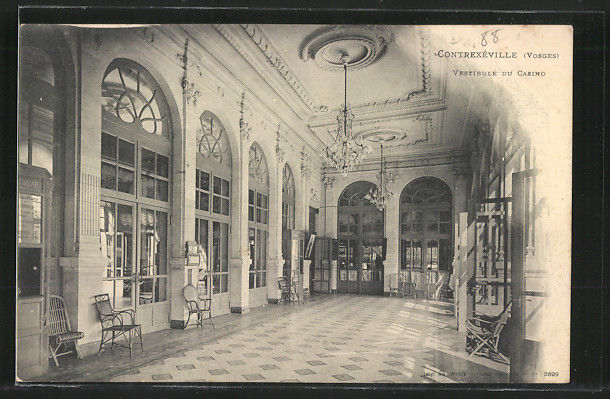
Vestibule of the Casino (postcard image captured from Ebay.)
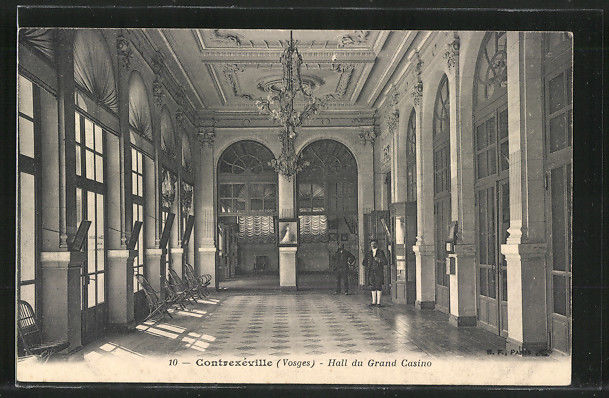
Grand Hall of the Casino (postcard image captured from Ebay.)
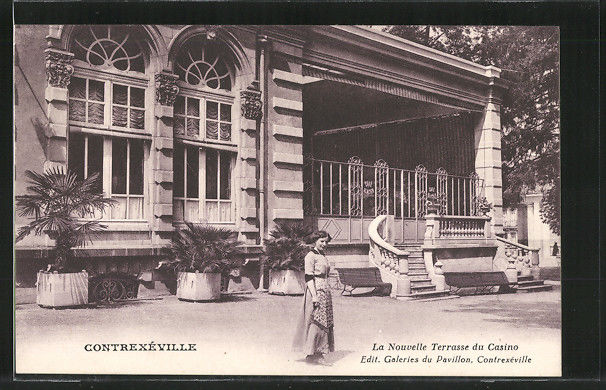
Postcard showing the new terrace of the Casino, ca. 1910 (image captured from Ebay.)
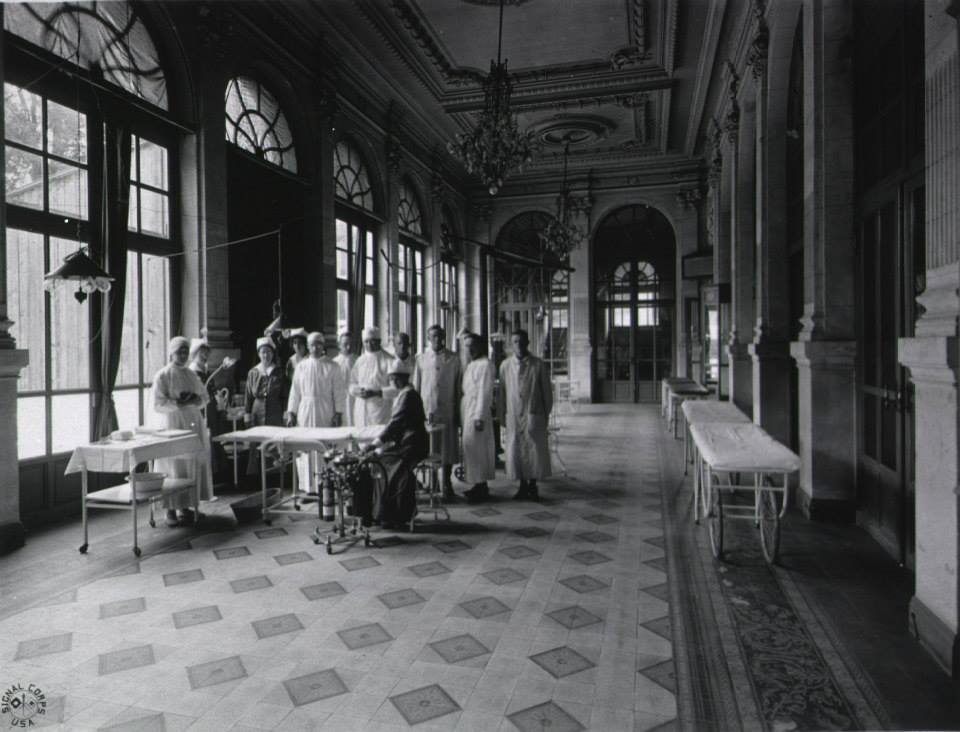
Surgery team of the AEF set up in the vestibule of the Casino. (image from the National Library of Medicine)
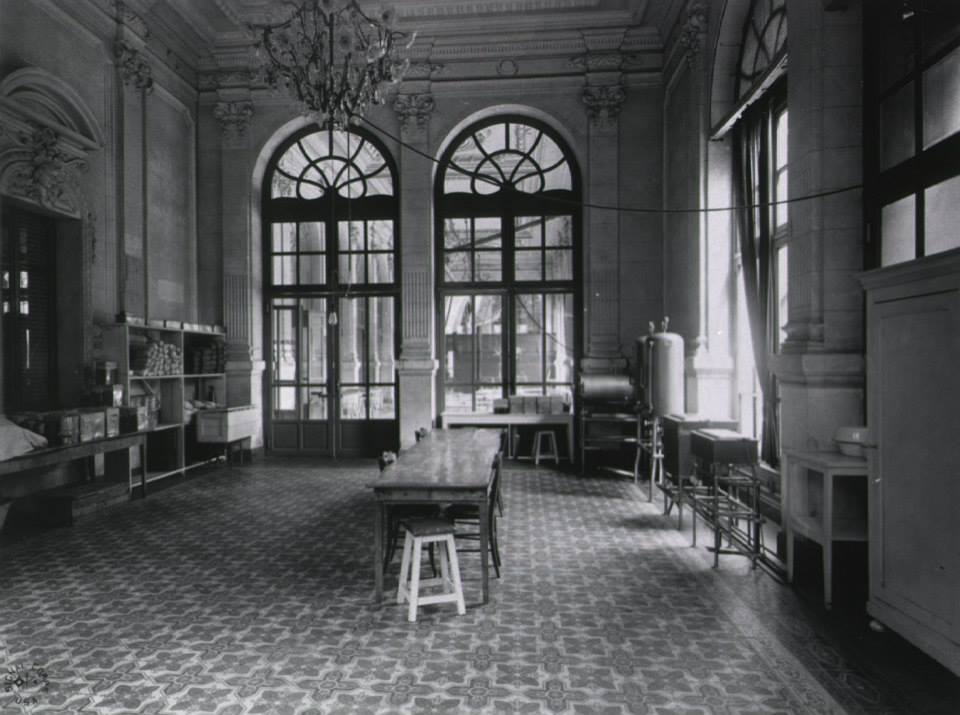
Sterilizing equipment (autoclave, etc.) of Base Hospital 32 is set up in the vestibule of the Casino. (Image from the National Library of Medicine)
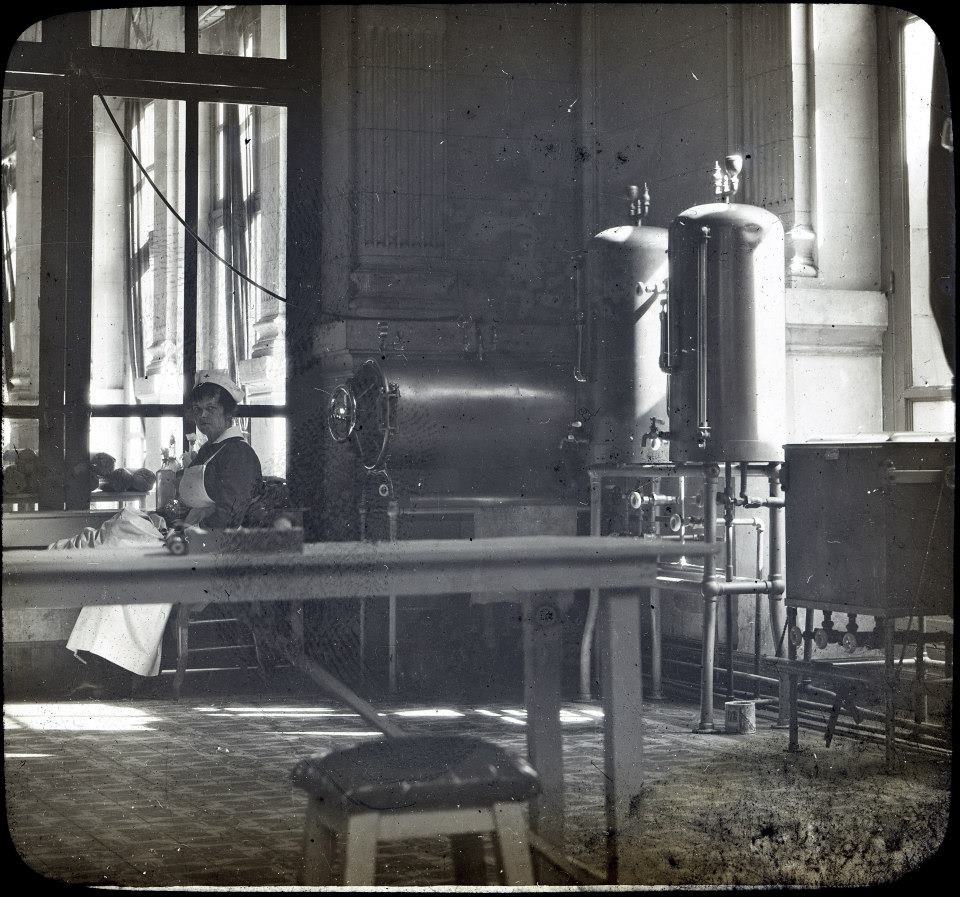
Nurse with equipment in the vestibule of the Casino (image from Mahoning Valley Historical Society, Youngstown, OH.)
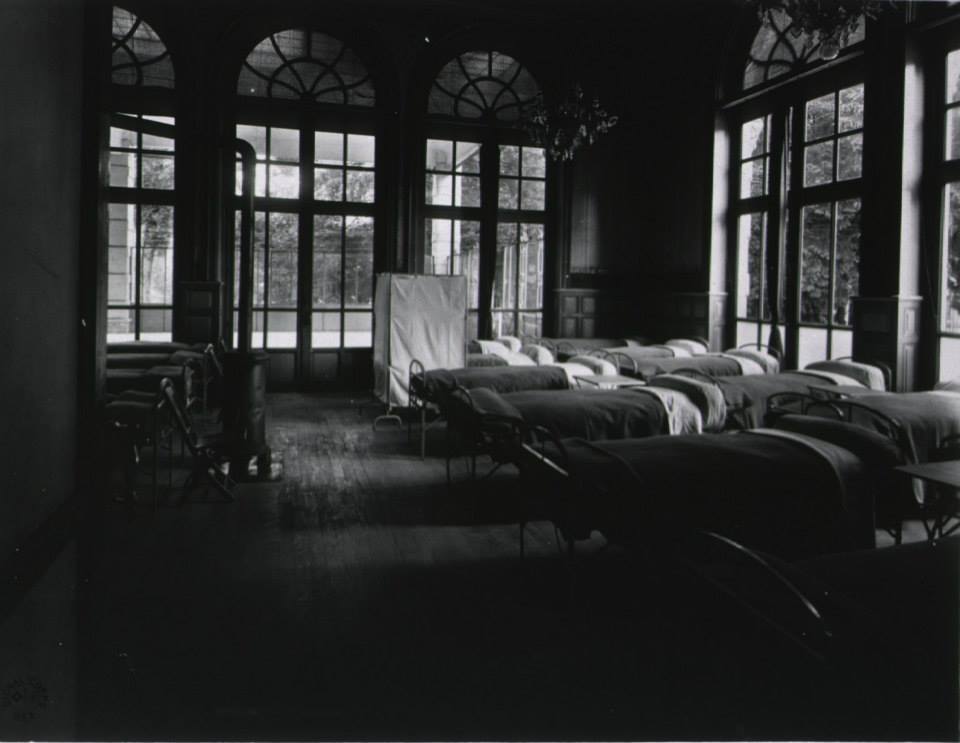
During the Meuse-Argonne drive by the Allies in 1918, additional hospital beds were needed. Patient beds were set up in the terrace of the Casino. (image from the National Library of Medicine)
Casino Theater
Mrs. Belmont Tiffany of New York City, in France as a Red Cross worker, was present at the opening of the Casino theater, leased by the Red Cross. The occasion was celebrated by an elaborate program, Mrs. Tiffany being an honor guest and the principal speaker. With the opening came the announcement that Capt. Lawrence Hitchcock, through whose efforts the theater was procured for the use of the soldiers, had been transferred to headquarters at Paris. The occasion was a fitting close to his career in Contrexeville, exemplifying, as it did, the energy and interest given in the behalf of the Army formations in Contrexeville. In his final address Capt. Hitchcock outlined briefly the work contemplated by the American Red Cross, and reviewed generally the accomplishments since his arrival. Capt. W. H. Thompson was announced as his successor. [Kaletzki, p. 52]
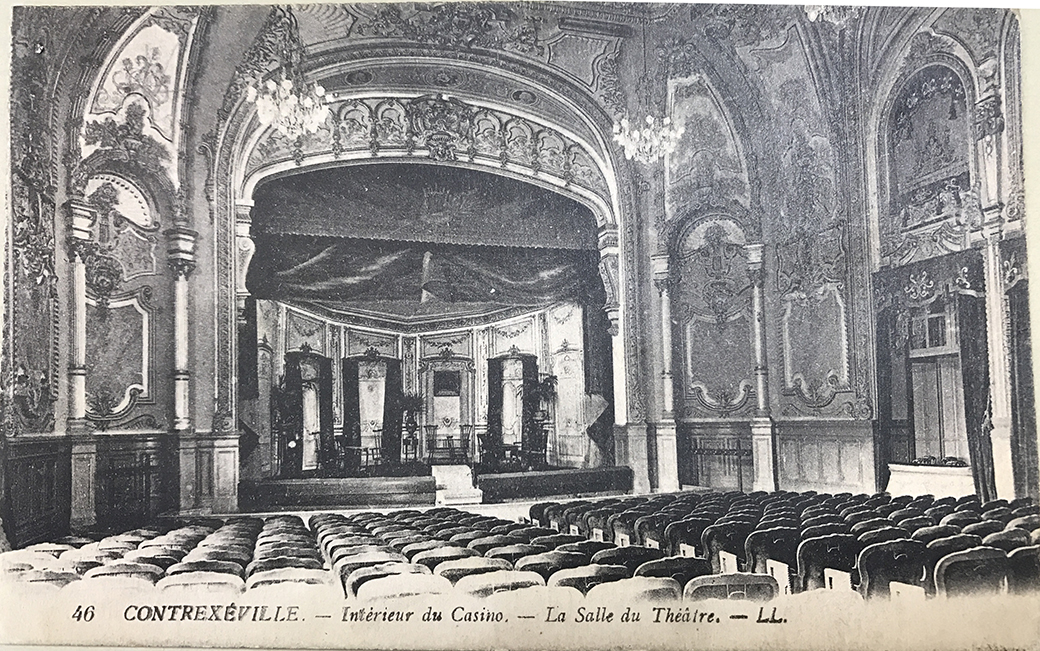
Postcard from 1918, showing the interior of the Casino Theater (from the collection of peronal items of Katherine Olive Graber, AEF Nurse with BH 32 (Iowa Historical Society.)
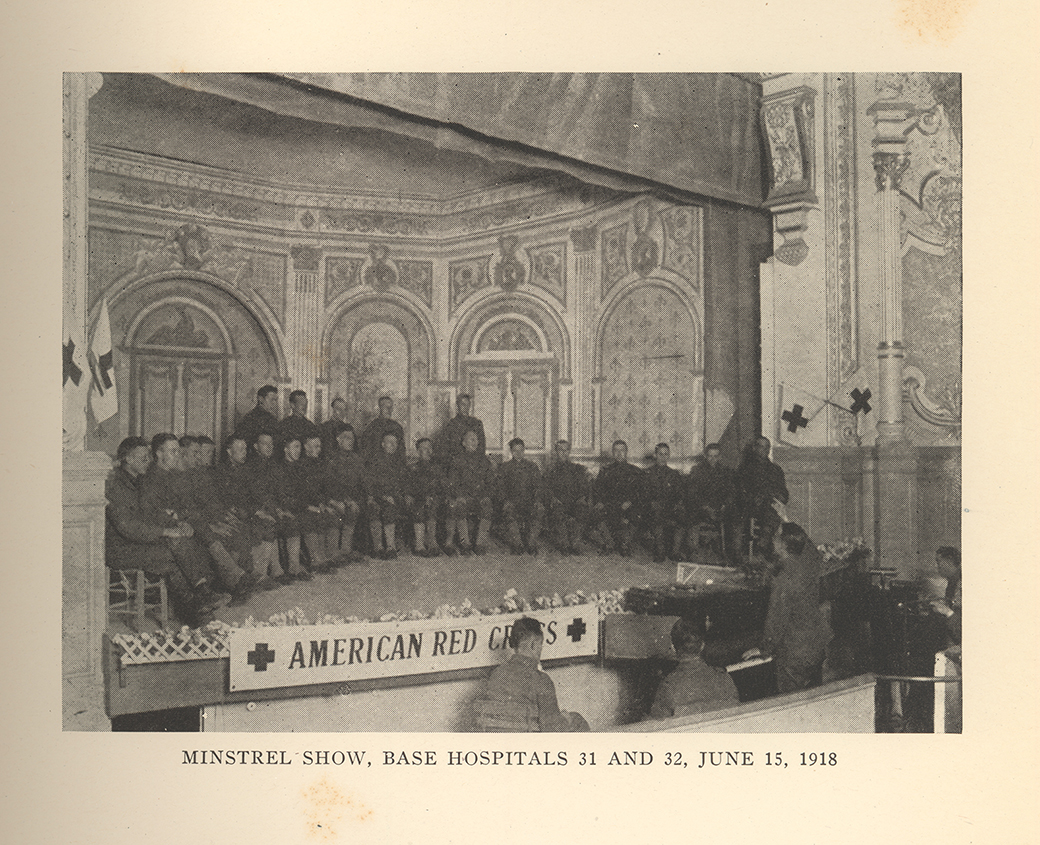
Minstrel show in the theater of the Casino (image from the unit history of Base Hospital 32)
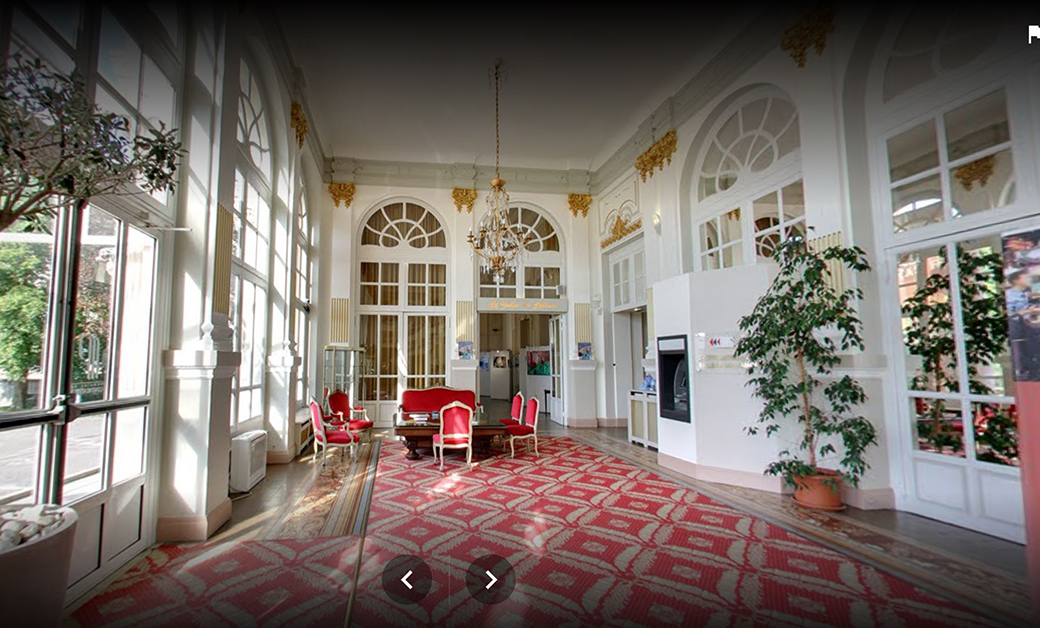
Vestibule of the Contrexeville Casino as it appears today (2017.) Image from the website of the Hotel Cosmos.